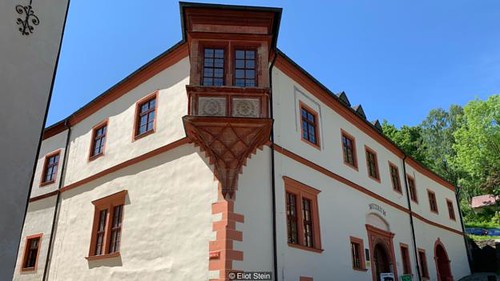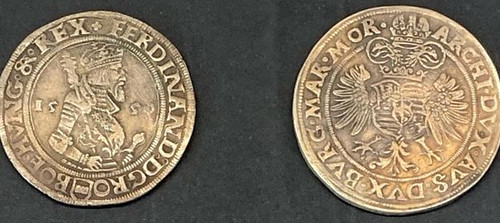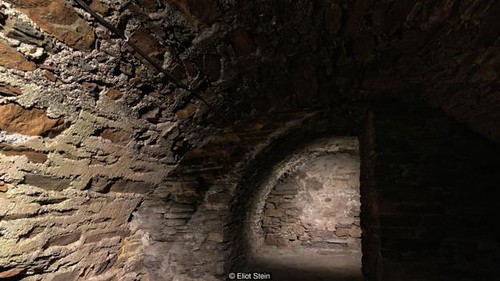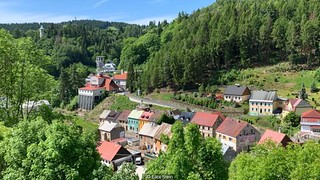
PREV ARTICLE
NEXT ARTICLE
FULL ISSUE
PREV FULL ISSUE
THE CZECH TOWN THAT INVENTED THE DOLLARDick Hanscom, Chip Howell and Kavan Ratnatunga passed along this nice BBC Travel Series article by Eliot Stein about the birthplace of the dollar. It's well-written and researched. See the complete article online for more. -Editor
Yet, one place where the dollar is not accepted is in the tiny Czech town of Jáchymov – which is ironic, because it was here, tucked deep into the wooded folds of Bohemia’s Krušné hory mountains, where the dollar originated 500 years ago in January 1520. But as I pulled a George Washington one-dollar bill from my wallet in Jáchymov’s 16th-Century Royal Mint House museum, the very spot where the dollar’s earliest ancestors were coined, docent Jan Francovic smiled and stopped me. “I haven’t seen one of these in a long time,” he said, calling over two colleagues. “In Jáchymov, we only accept koruna, euros or sometimes Russian rubles. You’re the first American to come here in more than three years.” 
Joachimsthal Royal Mint house museum Long before Jáchymov existed, the rolling mountains separating modern-day Bohemia and Saxony were ruled by wolves and bears who roamed its virgin forests. When vast quantities of silver were discovered in 1516, enterprising local nobleman Count Hieronymus Schlick christened the area Joachimsthal (“Joachim’s valley”) after Jesus’ grandfather, the local patron saint of miners. “At the time, Europe was a continent of city-states with local rulers vying for power,” explained local historian Jaroslav Ochec. “With no standard monetary unit among them, one of the most effective ways rulers could assert their control was to mint their own currency, and that’s what Schlick did.”  The governing Bohemian Diet officially granted Schlick permission to mint his silver coins on 9 January 1520. The count stamped an image of Joachim on the front, the Bohemian lion on the back, and named his new currency “Joachimsthalers” – which soon became shortened to “thalers”. In an age when the metal content of coins was the sole determinant of value, Schlick did two smart things to ensure the thalers’ spread and survival. First, he made the thaler the same weight and diameter as the 29.2g Guldengroschen coin used throughout much of central Europe, which made it easier for neighbouring kingdoms to accept it. More importantly, he minted more coins than the world had ever seen. In just 10 years, Joachimsthal transformed from a 1,050-person hamlet to the largest mining centre in Europe – a bustling 18,000-person hub with 1,000 silver mines employing 8,000 miners. By 1533, Joachimsthal was the second-largest city in Bohemia after Prague, and by the mid-16th Century, Urban estimated that some 12 million thalers minted from these mountains had spread across Europe – far more than any other currency on the continent. Joachimsthal’s silver deposits soon ran dry, but by 1566, the thaler was so well known across Europe that when the Holy Roman Empire sought to establish a standard size and silver content for the many local currencies in its kingdom, it chose the thaler, calling all acceptable silver coins “Reichsthalers” (“thalers of the empire”).  The dark, vaulted basement below the Royal Mint House is where the first thalers were assayed “For the next 300 years, many countries around the world modelled their money after the thaler,” Urban said, staring across Jáchymov’s rusted metal roofs towards the hulking white shaft of Europe’s oldest continuously operated mine and the Schlick castle, which both still loom over the town. “Soon, the thaler started to live a life of its own far from here.” There are still no signs anywhere in Jáchymov stating its rightful claim as the birthplace of the dollar. But if you head inside the town’s Royal Mint House museum and ask the docents to show you what’s new for this year’s quincentenary, they’ll proudly point behind the desk and show you a small frame holding a crisp new George Washington. To read the complete article, see:
For more information on the Jáchymov Royal Mint House museum, see:
 Wayne Homren, Editor The Numismatic Bibliomania Society is a non-profit organization promoting numismatic literature. See our web site at coinbooks.org. To submit items for publication in The E-Sylum, write to the Editor at this address: whomren@gmail.com To subscribe go to: https://my.binhost.com/lists/listinfo/esylum All Rights Reserved. NBS Home Page Contact the NBS webmaster 
|
